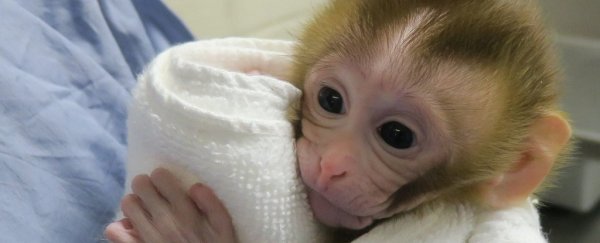University of Pittsburgh School of Medicine scientists announced a milestone Thursday in their efforts to preserve the fertility of young boys undergoing cancer treatments.
The advance involves using cryopreserved testicular tissue to produce sperm for in vitro fertilization.
Writing in the journal Science, the researchers announced the birth of a monkey born using this technique and said the success paves the way for human trials.
Susan Taymans, program director of the fertility and infertility branch of the National Institute of Child Health and Human Development (NICHD), and who oversaw the funding of the study, said that while this experiment was small and limited to monkeys, it raises "a good bit of hope" that the technique can be further developed for use in regular medical practice - possibly even in the lifetime of today's boys.
"Before it was just a concept: 'Can we make mature sperm from immature tissue?' Now we've shown it can lead to healthy sperm that can fertilize an egg and can result in a healthy baby," she said.
Over the past 40 years, medical science has achieved spectacular success in treating many forms of childhood cancers - pushing the survival rate from 10 percent to 80 percent.
And as these boys and girls live longer lives, attention has turned to how to help them have children of their own.
"The focus in medicine has shifted from just straight survival to what kind of quality of life they have after their treatment," Taymans said.
Adult cancer patients undergoing chemotherapy or other treatment that is likely to leave them infertile can choose to have their sperm or eggs frozen. But for a child who has not yet undergone puberty, that is not an option.
Kyle Orwig, the study's senior author and a professor of obstetrics, gynecology and reproductive sciences at Pitt's School of Medicine, and his colleagues, have been studying ways to try to use immature tissue taken from the testes.
In this experiment, they took tissue from five rhesus macaques too young to produce sperm and froze the pieces for a range of time periods, from as short as five hours to as long as five months.
Researchers thawed the frozen material and took more fresh samples and grafted them in 39 places under the skin on those monkeys, including the scrotum and back.
When they removed the grafts, they found that every single one of the 39 grafts was teeming with sperm. They then used the sperm to fertilize 138 eggs. About 40 percent grew into early-stage embryos.
Eleven of those embryos were transferred into female monkeys.
One led to the birth of a baby monkey they called Grady - a combination of "graft-derived" and "baby."
The fact that the tissue was still able to produce sperm despite the freezing and thawing process was key. Orwig said that the resulting sperm had a normal morphology, or shape, but that it was "twitching" rather than "swimming".
That was expected, based on previous studies, however.
"With pediatric patients, we know we're going to have to freeze for many years or decades" before they use it, he said.
Ovarian tissue freezing for fertility preservation is already being used on an experimental basis for women and girls with cancer.
It has an important advantage over freezing a small handful of eggs because a larger number of immature eggs can be preserved in one shot. The tissue is typically placed back in the body using a surgical procedure.
Several dozen women have had babies using this technique.
Scientists are also looking at ways to induce the maturation process for sperm or for eggs outside the body as an alternative to grafting in men or placing the tissue back inside the body for women.
Orwig said the team has begun conversations with regulatory bodies about human trials of the testicular tissue technique. He said that it would begin with adults to test the safety of the procedure and if that went well would begin work with children.
Meanwhile, he said, he hopes his work will inspire doctors who treat child cancer patients to have more conversations about fertility.
"At least the older generation of physicians were quite paternalistic at protecting patients and didn't want to overload them at this stressful time and missed the opportunity to educate them about the fertility part," he said.
"But cancer survivors who have come back to us consistently tell us they wish they had known."
2019 © The Washington Post
This article was originally published by The Washington Post.
